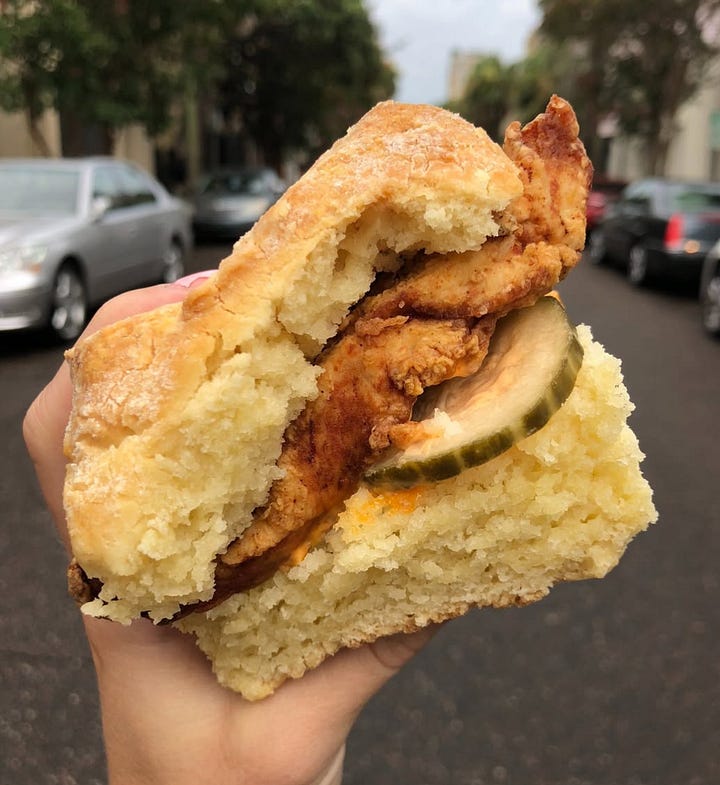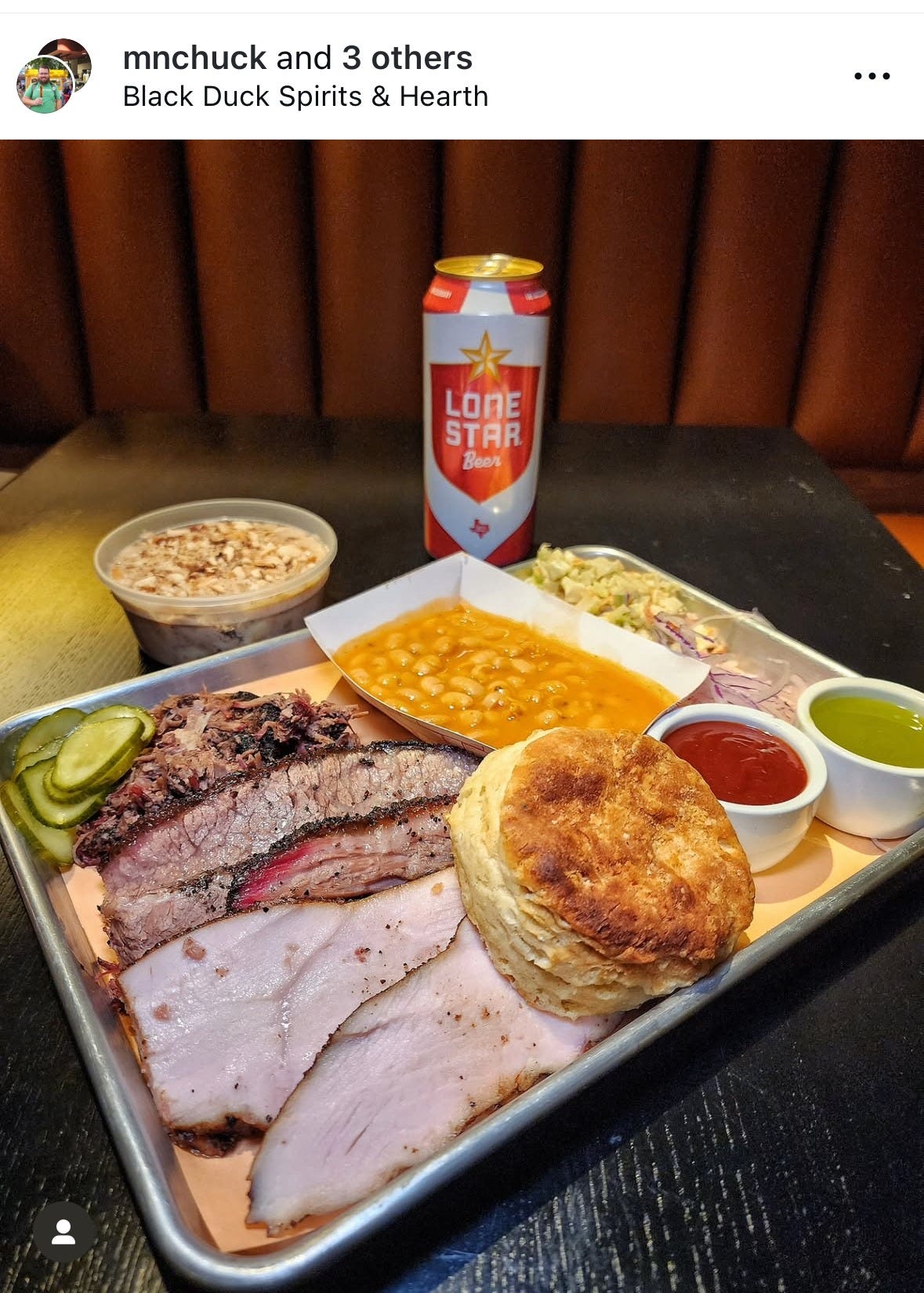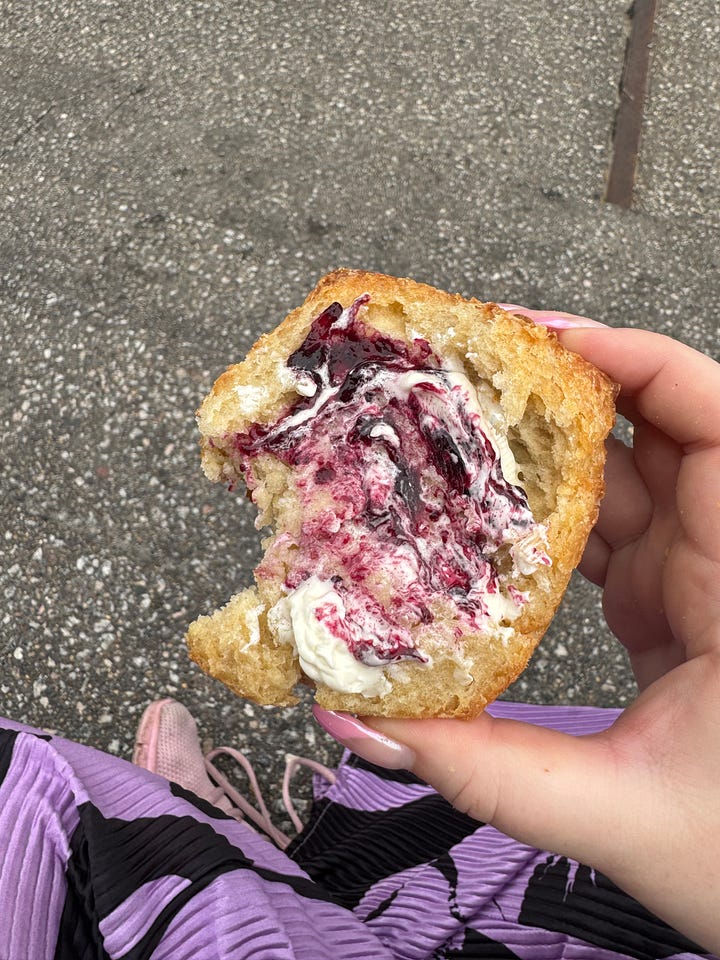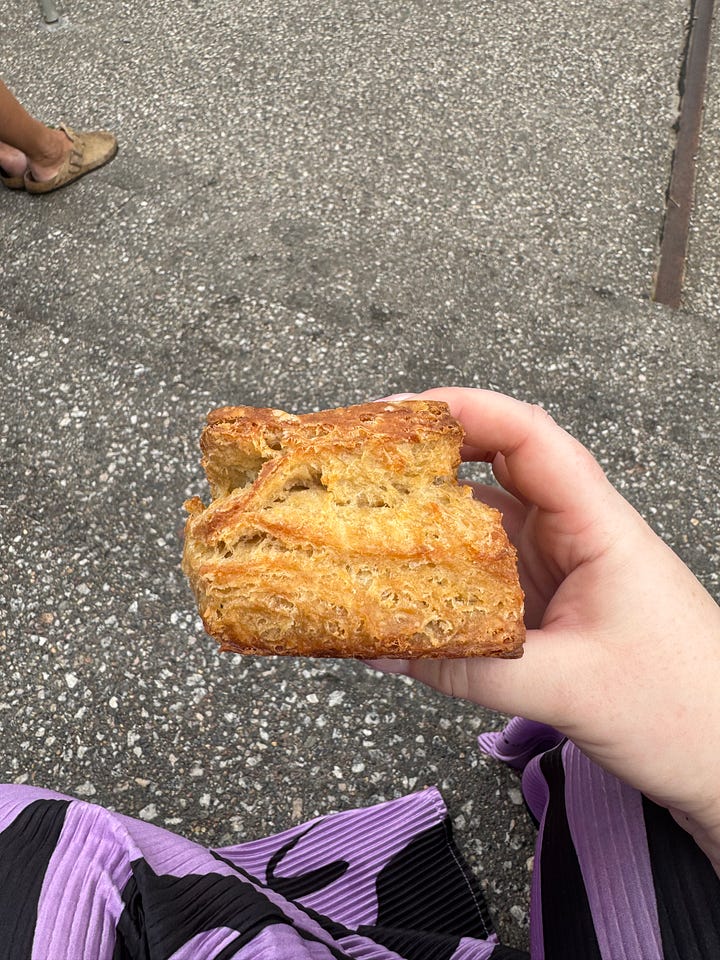The only two Minneapolis biscuits worth your time.
And a little primer on northern-southern cuisine.
In the south, you can throw a rock and find a good biscuit.
The worst of the southern biscuits are better than the best of their northern counterparts, as is true of other southern staples like grits, chess pie, and cornbread.
Just like cheese curds in Minnesota. When my friend Chris came to visit from California and ate one here, he said, “I’ve never had a cheese curd like that.”
Southern biscuits are tender, light (in texture and often in color), fluffy clouds. They are often (but not always) made with lard and soft wheat flour. That flour is hard to find in the north but ubiquitous in the south. It’s called White Lily. Sometimes I can’t find it online and I have to order it from a friend in the south, because White Lily flour is damn near impossible to find in the north. I’ve never met a southern biscuit that doesn’t use buttermilk, either, but when I ask some local restaurants what they’re using they respond with, “2% milk,” which makes me want to apologize deeply and profusely to everyone who lives in Alabama.
Northern biscuits are, well, they’re hard. They are often golden, not just on the top and bottom, but the entire sides. They are dense and flat. Unlike their crumbly counterparts, they are dry. That’s a distinction that sometimes is hard to discern, but is ever present if you’ve eaten a lot of northern biscuits. Northern biscuits use standard flour with its standard protein content (White Lily has less protein). I’ve also only encountered one or two biscuits in the north that use lard—here, butter or shortening reigns supreme.
Northern biscuits are a different variety of food altogether, just like northern cornbread uses oil instead of bacon grease, flour instead of straight cornmeal, and glass instead of a ripping hot cast iron skillet.
Northern biscuits are not southern cuisine, but what I’ve dubbed northern-southern cuisine. To me, these are two distinct styles of cooking.
Both of them feel defined to me—and I don’t actually hate all northern-southern food (sweet cornbread can be excellent in the right context). The problem is that the presence of northern-southern cuisine often eclipses true southern food in a way that is unfortunate. People’s palates in the north become used to northern spins on southern food in a way that often means that from the south southern restaurants don’t get their due in awards, national media, or cookbooks.
There’s no better example of this distinction between southern and northern-southern than biscuits.
When I asked people for biscuit recommendations in the Twin Cities, I kept getting hit with flat biscuits more akin to scones than their southern namesake. When I told people those were not biscuits, they lamented, “They are!” But here’s a side-by-side comparison of Alma’s biscuits (right) with Bird Bird Biscuit in Austin (left).


I love Alma, but this is not a good biscuit, and person after person told me it was. Some people defended it with such gusto that I went back to try it again. I followed that up asking those people, “Do you spend a lot of time in the south?” The answer was no.
I do. I feel a call to the south, regularly considering moving towards the most rural parts of Tennessee where dogs run wild on backroads and almost all the hikes are bushwhack.
Alma’s biscuit is dense and inside this biscuit is sometimes a layer that’s a little gummy.
If you look at the layers, it feels like they’ve been stifled. They want to rise more, but either due to lack of leavening, protein content in the flour, or being sealed by the knife that cut them, they can’t. It doesn’t crumble, it flakes. The one on the left is fluffy, with less focus on perfect layers and more focus on air and height.
Hot Hands has a similar problem. You can compare their biscuit (right) versus a biscuit at Callie’s Hot Little Biscuit in Charleston (left).


The right is a classic example of a northern-style biscuit that seems like a cross between a scone and a biscuit versus just a biscuit. If this is all you’ve ever had, you might think these are great examples of southern biscuits. They aren’t.
Still, for a while, this was the best we had. Sometimes best we have doesn’t mean good or great or drool-worthy. Sometimes best we have is just that. I tried dozens of biscuits looking for better. Finally, I just had to admit that we didn’t have good biscuits.
These flat, crunchy biscuits with dark outer edges* aren’t what I’m looking for in a biscuit. So I was resolved that to get good biscuits, I had to make them myself. Until now.
*Square biscuits bake less evenly, due to the sharp corners, and are less traditional than round biscuits. Sometimes, people who move here from the South lament over the lack of circular biscuits—I get it. But… lots of kitchens in the south make square biscuits, which, see the photos above for proof of that. The problem isn’t the square. The problem is the heat of the oven, the flour used, the fat, adapting to the other popular biscuits in town to meet locals where they are at, and technical skill.
Southern Style: Black Duck + Unicorn Barbecue
Black Duck’s dinner is a bit of an enigma to me. Is it Polish or Mexican or Southern or New American? I don’t know. But breakfast, to me, is clearly southern (with two Polish items on the menu). Chicken fried steak, biscuits and beef fat gravy, a corn pancake, hashbrowns sometimes stuffed with brisket, and a breakfast platter with a biscuit you can add for $3 feels like almost every southern brunch spot I’ve walked into. When I saw that menu, I knew I wanted to go try it.
If you know me, you know I don’t go to restaurants in their first 90 days. I also don’t go to brunch in its first 90 days or dinner service, if it’s added. I wait and give the team space to breathe.
But Chef de Cuisine Jake Benjamin Johnson at Black Duck is from the south—and I was craving a bit of southern food.
Chef Jake promoted that he was using Farm & Sparrow cornmeal for his blue corn pancake—and Farm & Sparrow and White Lily are the only two things I don’t source locally when faced with a head-to-head choice. He also posted the menu and I saw it feature a biscuit with jam, the same biscuit he serves with his Unicorn Barbecue platters of Texas-style smoked turkey and brisket (the one I got at Unicorn was round, but the one you get a Black Duck is square).

I woke up my boyfriend on his morning off and went to brunch (thanks babe). We didn’t just go on the first day, we were the first people there.
We ate half the menu, all of it was excellent. The corn pancake is a revelation worth eating. The brisket stuffed hash browns are wildly delicious. And even things like bacon are somehow better here than most other places.
I thought the pancake would be the star, but it wasn’t. It was the biscuit. “When we started brunch, it was the first thing I thought of for the menu,” Chef Jake said.
Chef Jake uses 50% AP flour and 50% cake flour, making this biscuit softer than most of its northern counterparts. He said he’s “trying not to develop too much gluten and the cake flour helps with that.” It does. This is a tender biscuit and you could have fooled me about its absence of White Lily.
The biscuit made me feel a little bit emotional, because it was the first soft southern-style biscuit I’ve ever eaten in my hometown. That’s because the recipe started in the south. Chef Jake’s mom decided to learn how to make a great biscuit when he was in his teens. She called upon her mom, her husband’s mom, and Alton Brown, who taught her not to overwork the dough.
It was a family affair to make it and now it’s a family legacy.
Chef Jake said, “She came up with a great recipe. I took that recipe and made very slight adjustments and its one of my favorite things to make.” You can taste it in the biscuit.
Not just basic, but storied, it’s our best biscuit.
Northern-Southern Style: Vikings & Goddesses
When the Vikings & Goddesses biscuit launched at the Mill City Market, I arrived to find them sold out. It caught the eye of everyone in the city, from your neighbor down the street to former Star Tribune critic Rick Nelson. Since that fateful miss, I’ve arrived almost every week right at opening to score one of these lopsided beauties. For me, part of biscuits is not worrying about perfectly straight rises, but rather, worrying about how it tastes. This is the way these are baked, mostly by baker Jacob Salzman who has been with V&G for four years.
Held in a little hot box, served (if you want) with whipped Hope butter and rotating homemade jam, this biscuit is tall (I had one that was 3.5 inches tall), fluffy, and can be torn apart by hand to reveal flaky layers. To me, it’s obvious that it’s made with hard wheat flour, lacking a bit of the softness of a southern biscuit, but it’s as good as it gets with hard wheat flour. And by as good as it gets, I mean it’s damn good.
Here, the biscuits don’t look like the layers are begging to rise. They’ve risen.
While Black Duck’s biscuit is for people who like soft outer edges and southern charm, this biscuit is for people who like a bit of a darker edge characteristic in northern-southern style biscuits, and yearn for height.


You might recognize these biscuits. The Lost Fox biscuits and gravy includes these biscuits, and years ago, Rachel Anderson used to make (different but similar) biscuits at Revival.*
*Revival’s biscuits used White Lily.
Incredibly buttery and immediately craveable, you have to arrive at the Mill City Farmer’s Market early to get one. Rachel told me, “We have been selling out by 10:30 consistently.” For me, even arriving at 10:00am is pushing it. I show up early with a Red Wolf Chai in hand to get in line. Then I eat my biscuit fresh and hot on the steps leading up to the Guthrie before shopping for strawberries and squash blossoms. It’s a perfect Saturday morning.
Never been to the Mill City market? Be warned, it’s incredibly busy after 9:00am with long lines and downtown prices. It’s also the market that often has the “firsts” of the season. This year, I got ramps, strawberries, tomatoes, and squash blossoms here before anywhere else.
That elusive southern biscuit with White Lily and lard? I’m not sure I’ll be able to get it anywhere in this city except my house.
But… one day I hope a chef is brave enough to make a biscuit and proudly write contains lard on the menu. (Feel free to send the complaints from guests straight to me, chef!)
Until then, these are the two biscuits I’m eating, not begrudgingly, but happily.
I’m currently working on my best of southern classics lists, with guidance from southern chefs. Next up is fried chicken, but I’m also looking for authentic cornbread (all or almost all cornmeal, bacon grease idealllll, and the cast iron skillet is required) and grits (good luck to me). Want to help me do that?





